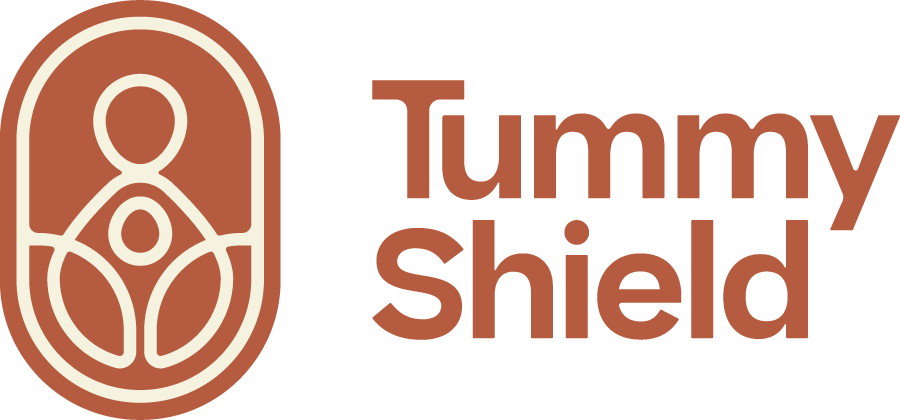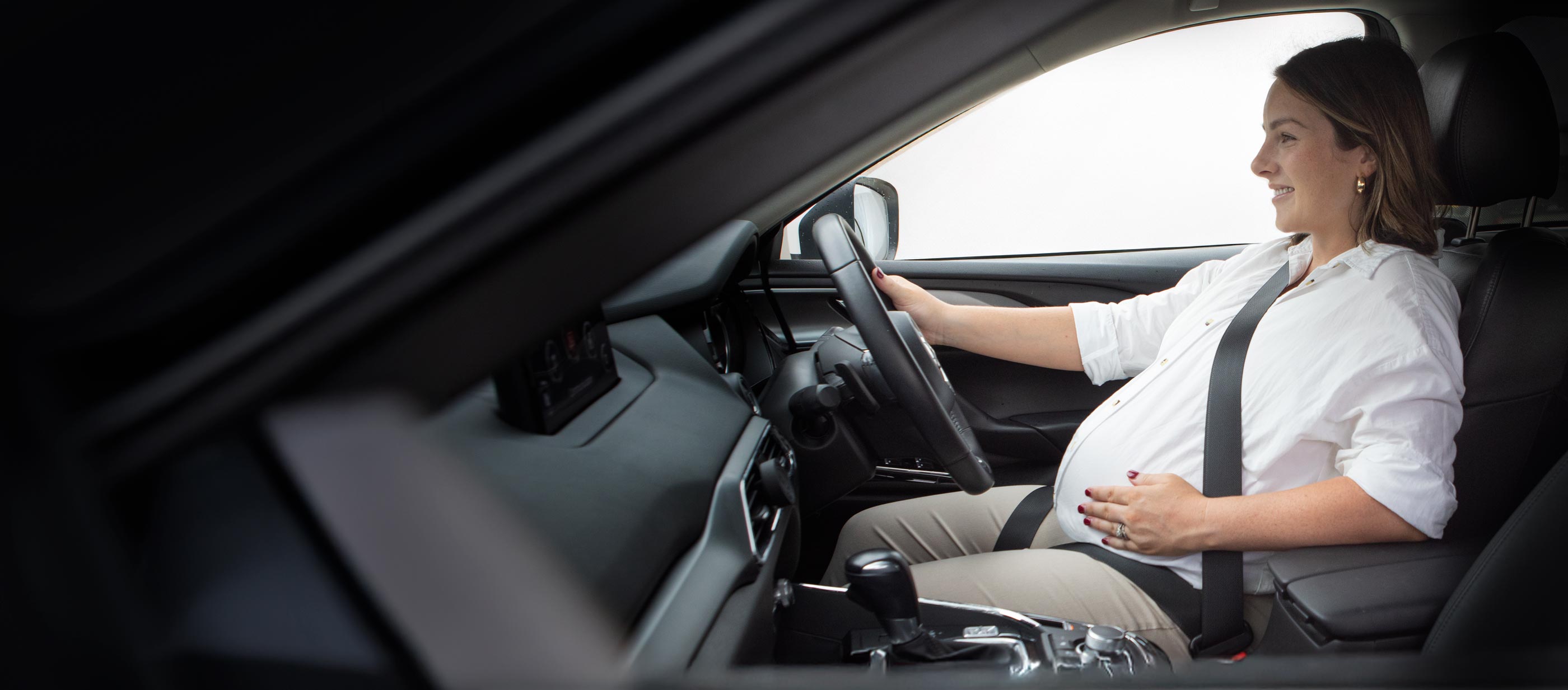Snug, secure and safety-certified, Tummy Shield® curbs the risk of injury to your bump.
96%
Of mums-to-be don’t wear a seatbelt correctly.‡
Incorrect seatbelt use is the leading cause of trauma-related fetal death in car accidents, so proper placement matters. We’re here to help. Tummy Shield® makes sure that your seatbelt is secure below your bump, keeping it in the right position throughout your entire journey.

Redefining road safety for expectant mums.
Support your unborn baby’s safety from day dot with Tummy Shield®. Suitable for any car seat, our ADR-compliant, crash-tested pregnancy seatbelt positioner helps prevent pressure on your bump while keeping you comfortable on the road. Designed and developed in Australia, maternity seatbelt safety starts with Tummy Shield®. Order today and be confident you’ve taken every precaution to protect your most precious cargo.
82%
Of trauma-related fetal deaths are the consequence of a car accident.†
42%
More likely to experience a road collision during the second trimester*
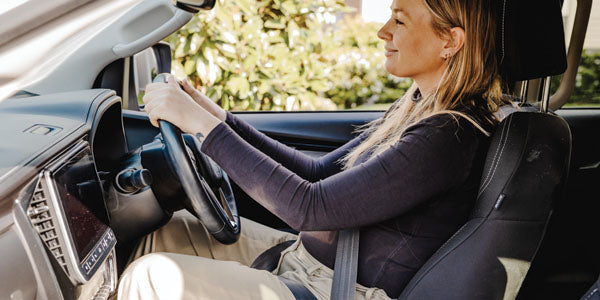
Superior safety
Your baby’s well-being is our priority. Proven to remain intact under impact, our pregnancy seatbelt holder meets all ADR, US and EU compliance criteria.
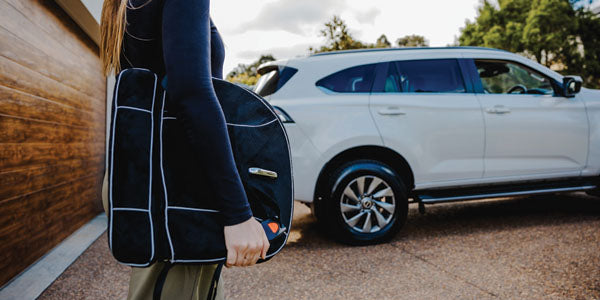
One-size-fits-all
Fit this universal design to any car seat with a three-point belt. No matter the vehicle’s make or model, Tummy Shield® makes it simple to protect your belly.
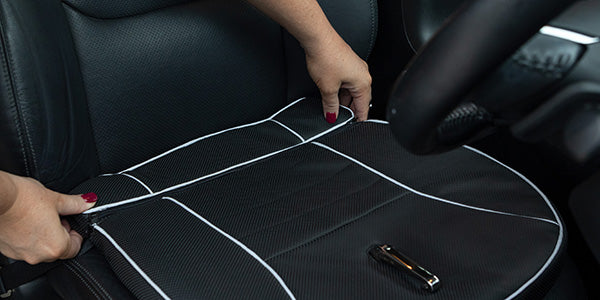
Soft & adjustable
Travel comfortably in every trimester. The plush, cushioned pad comes with an extension piece, relieving pressure on your bump as it grows.
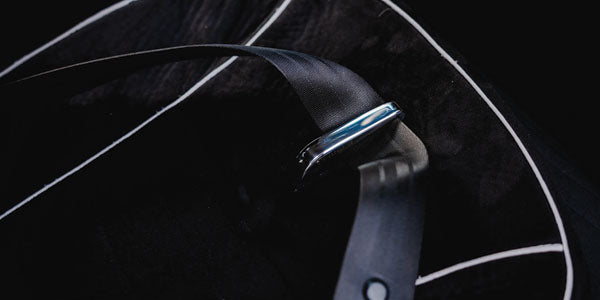
Built to last
Stronger and sturdier than plastic alternatives, our stainless steel pregnancy seatbelt hook provides powerful protection all pregnancy long.
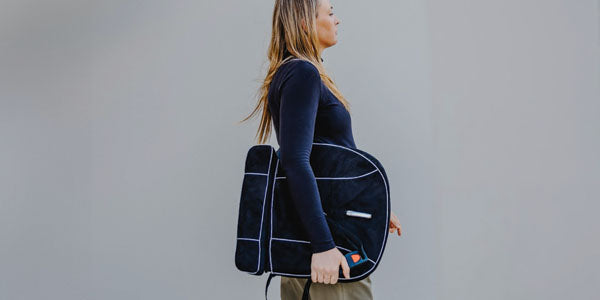
Neutral look
Featuring a black velour cover with white stitching, our minimalist pregnancy safety device complements any car’s interiors.
Rest assured wherever the road takes your family.
Reduce the risk of perinatal complications with the only crash-tested pregnancy seatbelt positioner. Tummy Shield® has been carefully designed to redirect force away from your abdomen during a collision or sudden stop.
Product
Tummy Shield® testimonials
Tried and trusted by mums-to-be.
Keira
"The doctors stated to that had I not been wearing the Tummy Shield it would have been a very different outcome. We go to all extremes to look after our safety, and our children's safety, looking after our unborn children is no different."
Troy
"I bought the Tummy Shield when I found out my wife was pregnant. When she was 34 weeks, the brakes on her car failed and she ran into a tree at low speed. She was checked over by our Obstetrician, she had some minor bruises on her upper thighs, but the baby is fine and safe thanks to the Tummy Shield protecting her stomach from her belt."
Jacinda
"This is one item that is a must have for all pregnant women. It was such a comfort to know that I did everything in my power to protect my unborn child from injuries if I was in an accident."
References
*Redelmeier DA, May SC, Thiruchelvam D, Barrett JF. Pregnancy and the Risk of a Traffic Crash. CMAJ [Internet]. 2014 Jul;186(10):742-750. Available from: https://doi.org/10.1503/cmaj.131650
†Krywko DM, Toy FK, Mahan ME, et al. Pregnancy Trauma. [Updated 2022 Sep 12]. In: StatPearls [Internet]. Treasure Island (FL): StatPearls Publishing; 2024 Jan-. Available from: https://www.ncbi.nlm.nih.gov/books/NBK430926/
‡Acar BS, Edwards AM, Aldah M. Correct Use of Three-Point Seatbelt by Pregnant Occupants. Safety [Internet]. 2018;4(1):1. Available from: https://doi.org/10.3390/safety4010001
